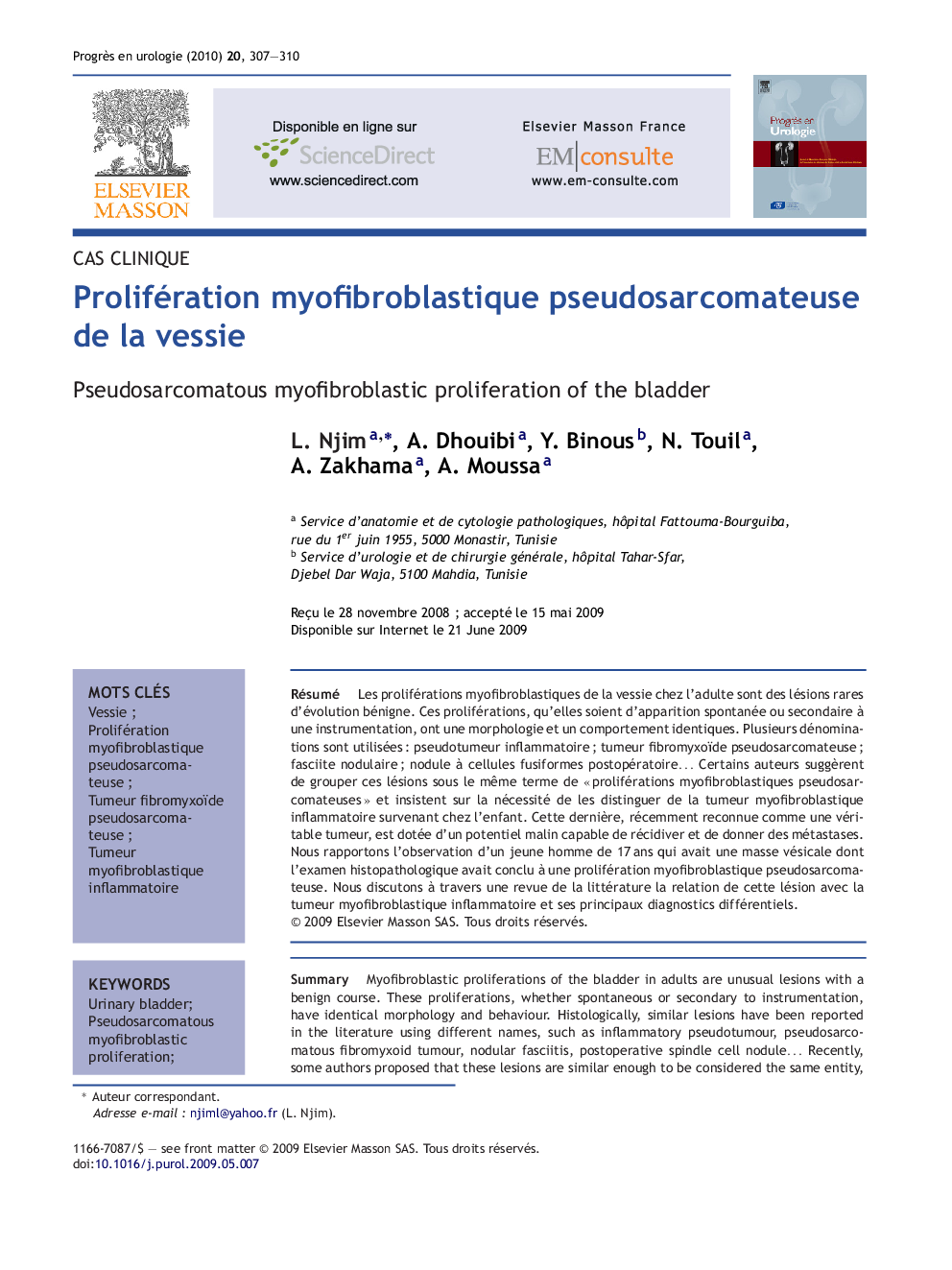| Article ID | Journal | Published Year | Pages | File Type |
|---|---|---|---|---|
| 3825455 | Progrès en Urologie | 2010 | 4 Pages |
Abstract
Myofibroblastic proliferations of the bladder in adults are unusual lesions with a benign course. These proliferations, whether spontaneous or secondary to instrumentation, have identical morphology and behaviour. Histologically, similar lesions have been reported in the literature using different names, such as inflammatory pseudotumour, pseudosarcomatous fibromyxoid tumour, nodular fasciitis, postoperative spindle cell nodule⦠Recently, some authors proposed that these lesions are similar enough to be considered the same entity, designated as “pseudosarcomatous myofibroblastic proliferation” and insisted on the necessity to distinguish them from the inflammatory myofibroblastic tumour of the childhood. The latter, recently recognized as tumour, has a malignant potential and is capable of giving metastases. We describe the case of a 17-year-old man who presented a vesical mass. The histopathological study concluded to a pseudosarcomatous myofibroblastic proliferation. We discuss, through a literature review, the relationship of this lesion with inflammatory myofibroblastic tumour and its main differential diagnoses.
Keywords
Related Topics
Health Sciences
Medicine and Dentistry
Medicine and Dentistry (General)
Authors
L. Njim, A. Dhouibi, Y. Binous, N. Touil, A. Zakhama, A. Moussa,
